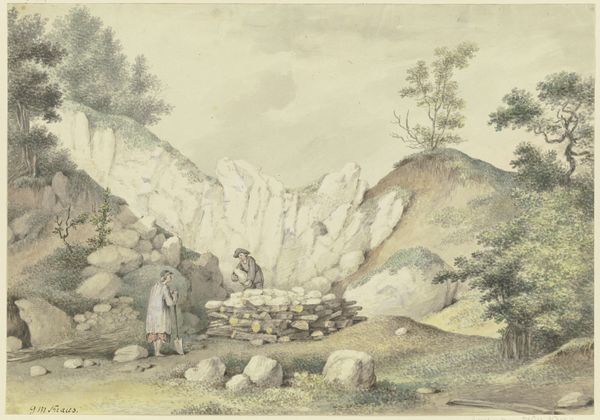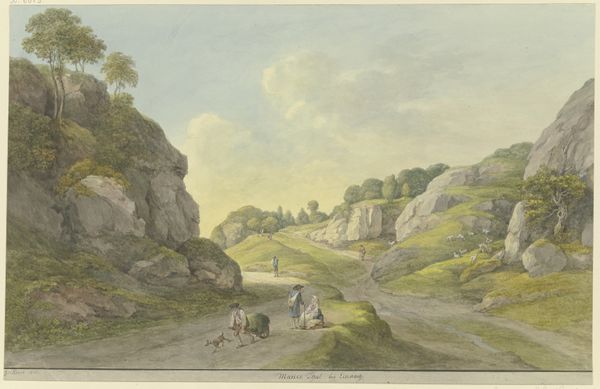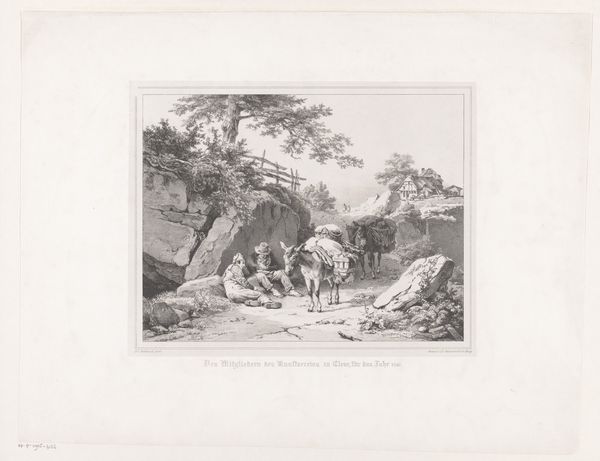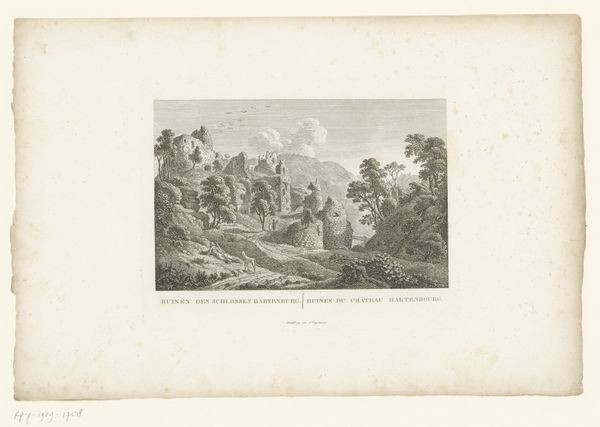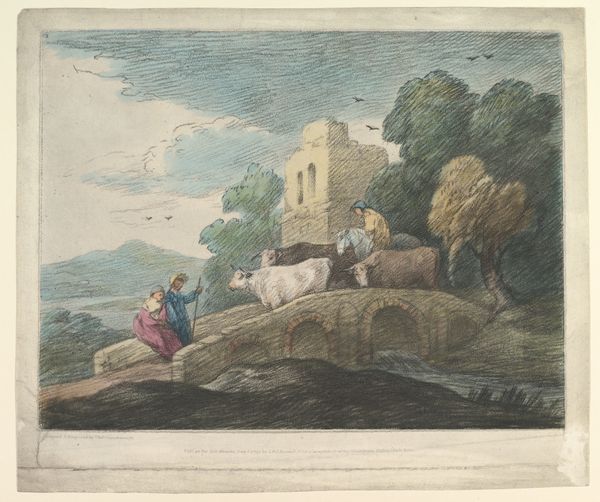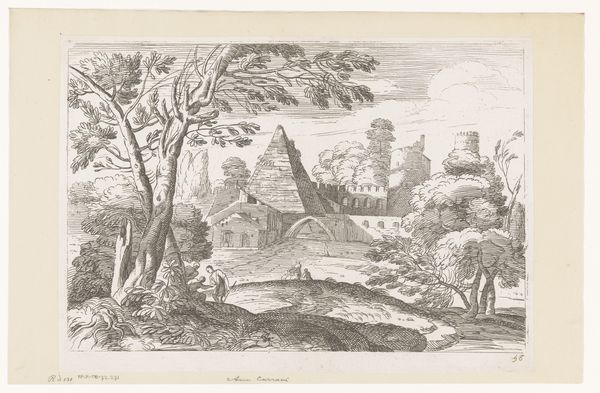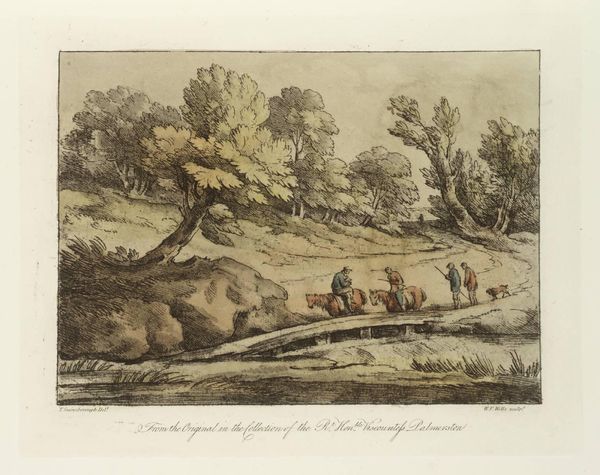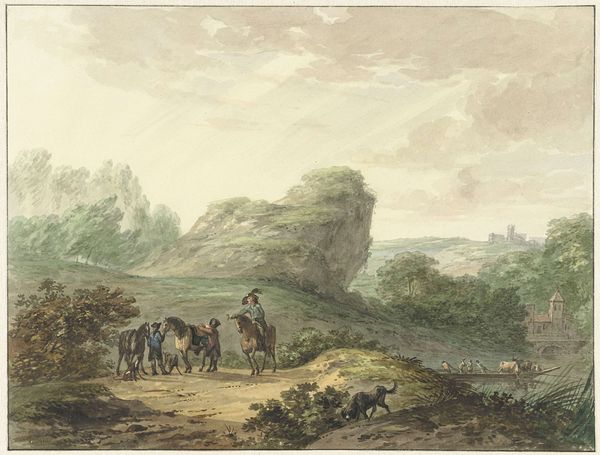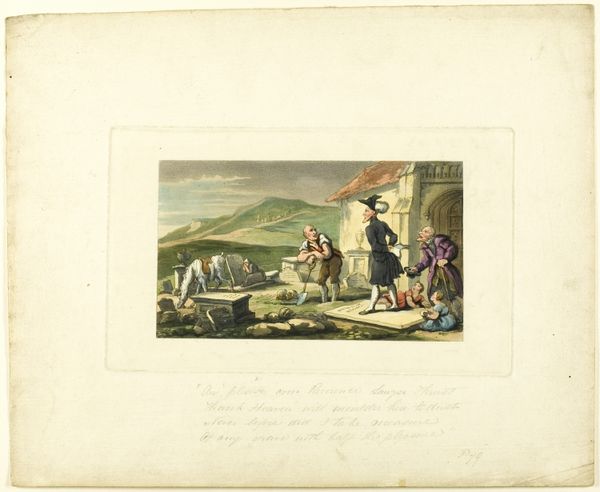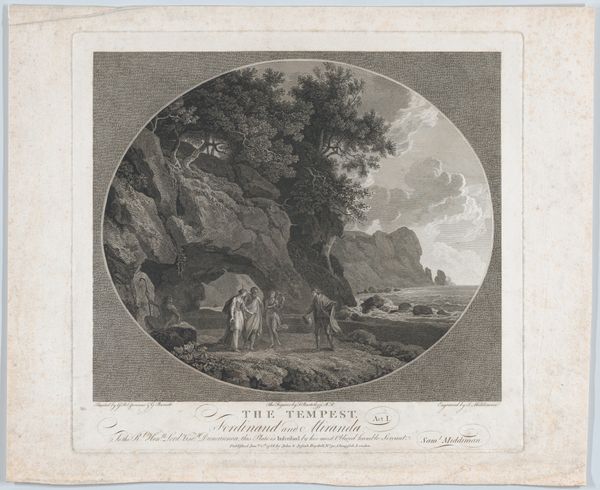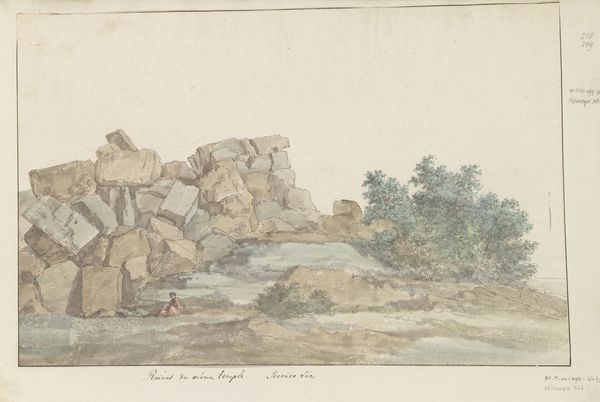
Stendysse uden for en landsby med en kirke 1808 - 1811
0:00
0:00
watercolor
#
neoclacissism
#
water colours
#
landscape
#
figuration
#
watercolor
#
history-painting
#
watercolor
Dimensions: 260 mm (height) x 338 mm (width) (bladmaal)
Curator: Christian David Gebauer created this watercolor landscape, titled "Stendysse uden for en landsby med en kirke," between 1808 and 1811. Editor: The stone dolmen immediately grabs the eye. It dominates the composition; I am struck by the raw, almost brutal presence of this heavy construction. Curator: Gebauer presents us with more than just the stones, though. The positioning of the men, the inclusion of the village, situate this prehistoric structure within a very specific social and political context. This watercolor reflects an emerging Danish national identity, interested in its own past, even its ancient roots. Editor: Yes, the men draw my eye too. Notice how Gebauer contrasted the roughness of the megalith with their tailored coats? A man even measures the stones, perhaps for an antiquarian project of inventory, which reflects contemporary European Enlightenment pursuits. What stones were available in that locality at the time? Was this readily sourced, or did it involve great labor to move it? Curator: And that’s precisely the kind of tension at play here. On the one hand, you have an attempt at scientific documentation. On the other, you also see elements of Neoclassicism; Gebauer subtly elevates this site to the level of history painting, imbuing the landscape itself with narrative and symbolic weight. Editor: The rendering in watercolour also interests me, compared with the subject itself. You've got this crude, monumental architecture rendered in fluid and ethereal washes of watercolour - quite an interesting tension! Almost as if trying to control the monumental through lightness. Curator: I would never think of it like this! But the placement of the village behind the dolmen, combined with the fact that a church is part of the scenery, gives me a view into Danish history during this time period, as well as the Danish effort to embrace their past. Editor: I am taken by its textural presence. Even captured through watercolour on paper, you feel its hulking, lasting significance. Curator: Ultimately, Gebauer’s work underscores the role of landscape, not just as a pretty scene, but as an active participant in constructing and preserving cultural memory.
Comments
No comments
Be the first to comment and join the conversation on the ultimate creative platform.

